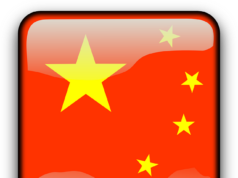A „Long March 3B“ rocket launched Friday night (CET) with the moon probe „Chang’e 4“, the state news agency Xinhua reported.
The starting point was the Xichang space station in the southwestern Chinese province of Sichuan.
About when „Chang’e 4“ is supposed to be put on the moon, initially different information was available. The state newspaper „China Daily“ said on Friday about a „multi-week“ trip. Other reports mentioned 27 days to landing.
As a landing site state media called the Aitken crater, which was named in 1970 after the American astronomer Robert Grant Aitken. After arrival, a robotic vehicle brought along should examine the ground and the structures around the landing point. The vehicle is equipped with a panoramic camera and measuring devices.
In addition, „Chang’e 4“ seed has been loaded to check whether vegetable cultivation in a closed environment is possible with the low gravity of the lunar surface. The communication with the lander is laborious because the back of the moon is in the radio shadow of the earth. In order to solve this problem, China had put a transmission satellite into the orbit of the moon in May, which is to serve as a relay station.
The front of the moon has been visited more frequently: The United States brought between 1969 and 1972 twelve astronauts on the earth satellite. In 1976, the Soviet probe «Luna 24» landed on the moon, followed by «Chang’e 3», the first Chinese lunar probe. The back of the moon is by no means dark, but gets as many sunbeams during the month as the front.



